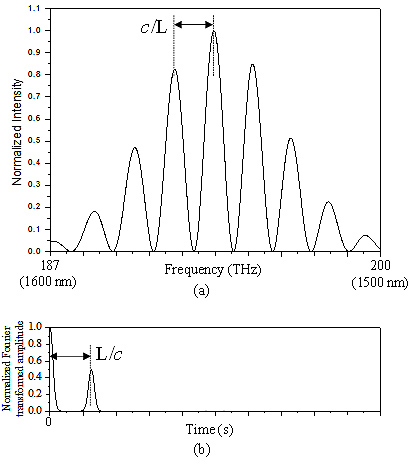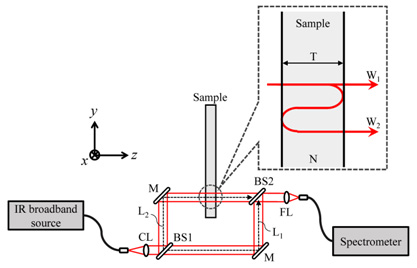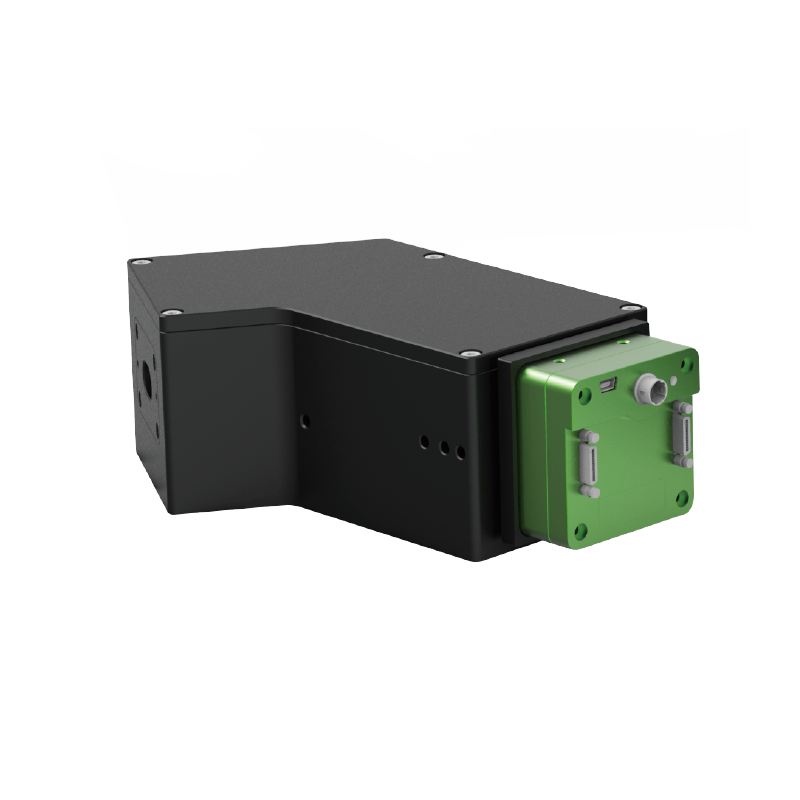Spectrally resolved Interferometry
Technology Spectrally resolved Interferometry
Spectrally resolved interferometry(SRI) measures the OPD by extracting information about the dominant periodic component through the Fourier transform
of an interference spectrum acquired within a wide spectral bandwidth. Hence, SRI is advantageous for high-speed measurements because the OPD can
be determined without any additional procedures, unlike conventional monochromatic laser interferometry. Eq. (1) is used to determine the intensity I(f) of
the interference spectrum at the OPD of L,

where I0(f) is the spectral density distribution of the light source, f is the optical frequency, and c is the speed of light in a vacuum. For example, with a
wavelength range of 1500 nm to 1600 nm in a Gaussian distribution and with an L value of 200 μm, an interference spectrum such as that in Fig. 1(a) is
obtained according to Eq. (1). In Fig. 1(a), the period of the interference spectrum in the frequency domain is c/L, which means that the period is inversely
proportional to L. Figure 1(b) presents the Fourier-transformed amplitude of the interference spectrum in Fig. 1(a), and L can be determined by measuring
L/c corresponding to the peak position in the Fourier domain. The phase of the interference spectrum in Eq. (1) can also be expressed as k·L using the
wavenumber k, with L becoming the phase slope on the k-axis. Using this relationship, L can also be determined by calculating the phase slope after the
inverse Fourier transform of the peak signal filtered in the Fourier domain in addition to a simple peak detection method.

Fig. 1 (a) Simulated interference spectrum with an optical path difference of 200 μm, and (b) Fourier transformed amplitude of the outcome Figure 2
presents a SRI system with a Mach-Zehnder configuration proposed to measure the physical thickness and group refractive index of a large bare glass
substrate. By measuring three different OPDs of L2 – L1, 2·N·T, and L2 + T·(N – 1) – L1, both T and N can be determined simultaneously. Because the
transmission-type method is relatively robust to environmental disturbances such as mechanical vibration or air fluctuations as compared to a
reflection-type method, it is applicable to an in-line inspection of the manufacturing process of a large bare glass. The proposed transmission-type SRI
system was also applied to total thickness measurements and thickness and refractive index measurements of individual layers of multi-layered samples.

Fig. 2. Optical configuration of a Mach-Zehnder type spectral-domain interferometer for measuring the physical thickness and group refractive index of a
large bare glass (Reference: Opt. Exp. 23(26), 32941-32949, 2015)




